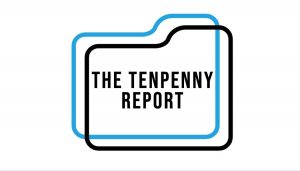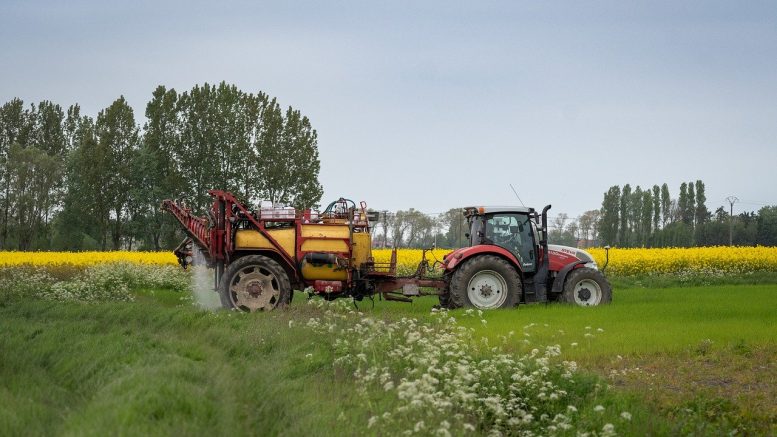Imagine a chemical company fudging its own data to lie about a product being safe? In the post-COVID era of Pfizer and Moderna, this is not so hard to imagine, is it? However, it turns out that this kind of thing has been going on for a long time. After all, we now know that Monsanto was aware of glyphosate’s (Roundup’s) carcinogenic potential for decades. Similarly, Syngenta, makers of the similar weedkiller paraquat, could have made the formula much safer. But they didn’t.
Paraquat is a highly toxic product. Even a tiny amount can have dire consequences. Three drops ingested will kill a person. As such, the EU has banned its use since 2007, and Switzerland, the home base of Syngenta, has banned the chemical since 1989.
The US EPA still allows paraquat use widely in the US, albeit restricted to use by farmers certified to apply it. In 2021, the EPA released what it terms tough new measures regarding paraquat use to “further protect individuals from exposure… while still allowing for the continued use of this important agricultural tool.” Paraquat can still be used aerially by cropdusters, but residential buffers are required. Use in pressurized sprayers is prohibited, so that’s something.
The EPA assures us that they have evaluated hundreds of toxicity and human exposure studies, and have found no adverse health outcomes, including Parkinson’s disease or cancer, associated with the highly toxic chemical. Interestingly, Syngenta is facing major litigation regarding the chemical causing Parkinson’s disease.
 Paraquat is poison
Paraquat is poison
Paraquat is an herbicide used to control invasive weeds in crops including cotton, corn, and soybeans. It is low cost and highly toxic, and is used in many countries, including India where it is commonly used as a poison in suicide cases.
How did the EPA reach its conclusion in 2021 to still allow paraquat use? Has the EPA relied too heavily on internal Syngenta data? Can that data even be trusted? In 2021, internal company documents showed that the company realized it needed a safer formulation – for decades. Internal company discussions on the topic date back to 1968. These records show that company executives resisted and rejected many of the options to change the formulation of their paraquat product Gramoxone. Today nearly 400 companies in addition to Syngenta are registered paraquat sellers. Despite the product being banned in the EU, the company still makes the product at its Basel, Switzerland headquarters for export to other countries.
Despite increasing concerns about fatalities, the company executives still resisted change. Their concerns were financial, and all about protecting profits over people. For nearly 30 years, Syngenta scientist Jon Heylings argued with the company to make the formulation safer, but the tweaks were deemed too costly. Heylings, who was head of research, left the company in 2008. He has publicly accused the company of relying on data generated in the 1970s and never using any updated data for its safety claims. Heylings even made a safer formulation which the company shelved to collect dust. His formulation had more of an additive that made it safer. But the company continued to discredit him. Despite that, Heylings doubled down and went public with his findings.
Heylings said that Syngenta knew it did not add enough additive to make a difference, and the paraquat has caused thousands of deaths across the world. It is extremely toxic and causes multiple organ failures which result in death after a number of days. There is no treatment once it is ingested. The company adds an agent called PP796 to the formulation, but Heylings realized they didn’t add enough. PP796 is an emetic, which causes rapid vomiting upon consuming to prevent a fatal dose from entering the blood stream. Company correspondence shows that back in 1970, executives argued that a large quantity of the emetic would be needed, which would make it “undesirable from commercial and other points of view …”. Profits over people.
Executives have known for decades
By 1973, the head of the UK Poisons Centre told company officials that it was “becoming increasingly difficult for him to champion Gramoxone as he had done for years due to the evidence of related poisonings and deaths. He urged the company to do something quickly to remedy the mounting deaths. It would have been easy – but less profitable – to add the emetic, so the company explored other options, such as adding coloring agents so people wouldn’t mistake it for tea or a soft drink. They also explored giving it a bad smell and using stronger warning labels. The situation became even more dire when US regulators began to take notice, and the company feared a US product ban.
So Syngenta did what most companies do – they studied the dose of emetic needed, first in animal trials then in human trials. They settled on a dose of 5mg per 10ml of Gramoxone, and submitted data supporting this dose to regulators. The only problem was that the data was deeply flawed. The actual research showed that three times the amount of emetic would be needed to make the product safer, but that’s not what the company told regulators.
The company response is much the same we heard from Pfizer and Moderna. First, the company is outraged at any suggestion they might not be solely focusing on human safety. Here’s what Syngenta said in that regard: “We reject any suggestion that in developing this product Syngenta and its predecessors had any motive other than to find the most appropriate level of emetic in paraquat to best address the risk from accidental and deliberate ingestion.” Then these companies remind people how dedicated they are and how much money they’ve spent towards that dedication: “Syngenta has invested hundreds of millions of dollars in developing and commercializing safer paraquat formulations over many decades.” And then comes the icing on the cake where the company reminds everyone how great and necessary the product is, human harm be damned, like this: “Despite the risk to users, Syngenta’s paraquat product is an essential weed-control and resistance-management tool for farmers. It’s the same as Pfizer and Moderna telling us all that the benefits of their COVID death jabs far outweigh the risks.
Why will the EPA not ban paraquat?
Just as this is only the tip of the iceberg for Pfizer and Moderna, it is the same for Syngenta as the dangers of paraquat continue to emerge along with the company cover-ups. US litigators have evidence that Syngenta also hid knowledge that their product causes Parkinson’s disease in long-term users such as farmers. Many studies have established the paraquat-Parkinson’s link,
Several scientific studies have linked paraquat to Parkinson’s, including a large study of US farmers jointly overseen by multiple government agencies. Parkinson’s disease is now considered one of the world’s fastest-growing neurological disorders; between 1990 and 2015, prevalence more than doubled. Approximately 60,000 Americans are diagnosed annually. The prevalence continues to expand and affect millions of people around the world. Parkinson’s disease is the fastest-growing neurological disease in the world.
Independent researchers continue to mount evidence that paraquat may cause Parkinson’s, and company data as far back as the 1970s shows signs of neurological after-effects.
Syngenta made a decision and adopted a certain strategy to protect their product, deemed a blockbuster chemical for the company. As such, Syngenta decided to vigorously defend and protect paraquat. The ability to sell the product was a top priority. To do that, the company strategized on how best to influence academia and regulatory agencies.
Is it no wonder that every EPA “thorough review” of the scientific information on paraquat and Parkinson’s disease – and every other health concern — is deemed to have insufficient evidence of any harm?
No, it’s not a stretch at all.
++++++++++++++++++++++++++++++++++++++++++++++++++++++++++++++++++++++
 Like what you’re reading on The Tenpenny Report? Share this article with your friends. Help us grow.
Like what you’re reading on The Tenpenny Report? Share this article with your friends. Help us grow.
Get more of Dr. Tenpenny’s voice of reason at her website.
Join our list here
Make a donation here (and thank you!)
++++++++++++++++++++++++++++++++++++++++++++++++++++++++++++++++++++++
Fed Up Texas Chick is a contributing writer for The Tenpenny Report. She’s a rocket scientist turned writer, having worked in the space program for many years. She is a seasoned medical writer and researcher who is fighting for medical freedom for all of us through her work.

